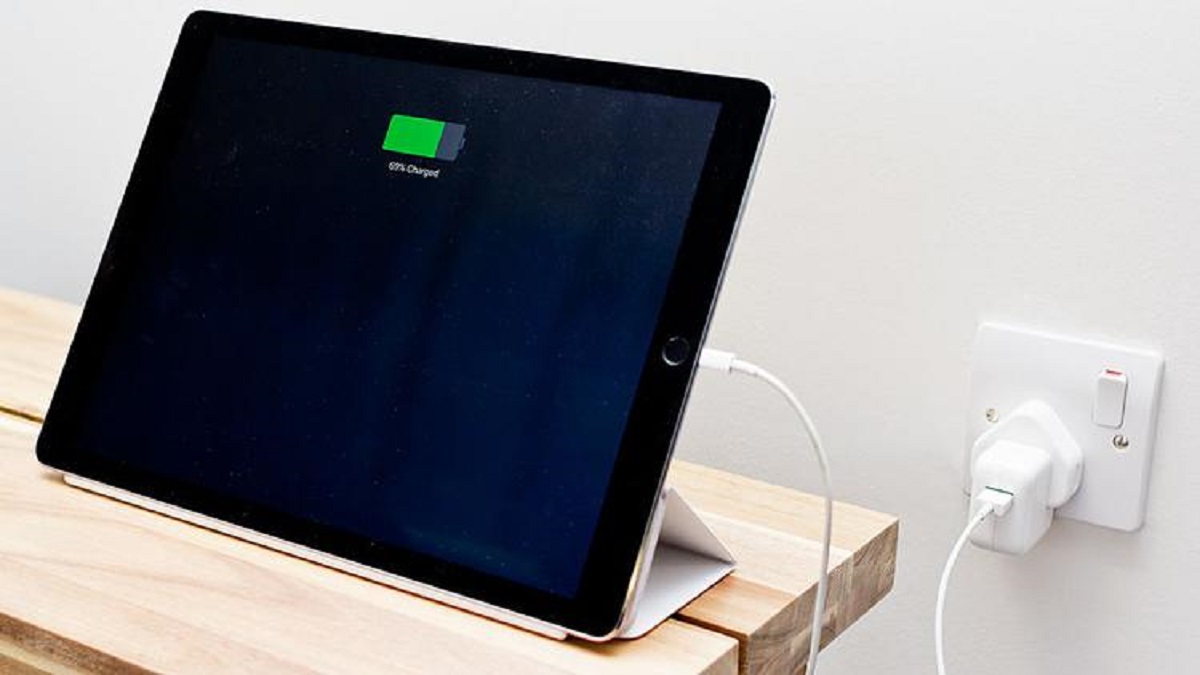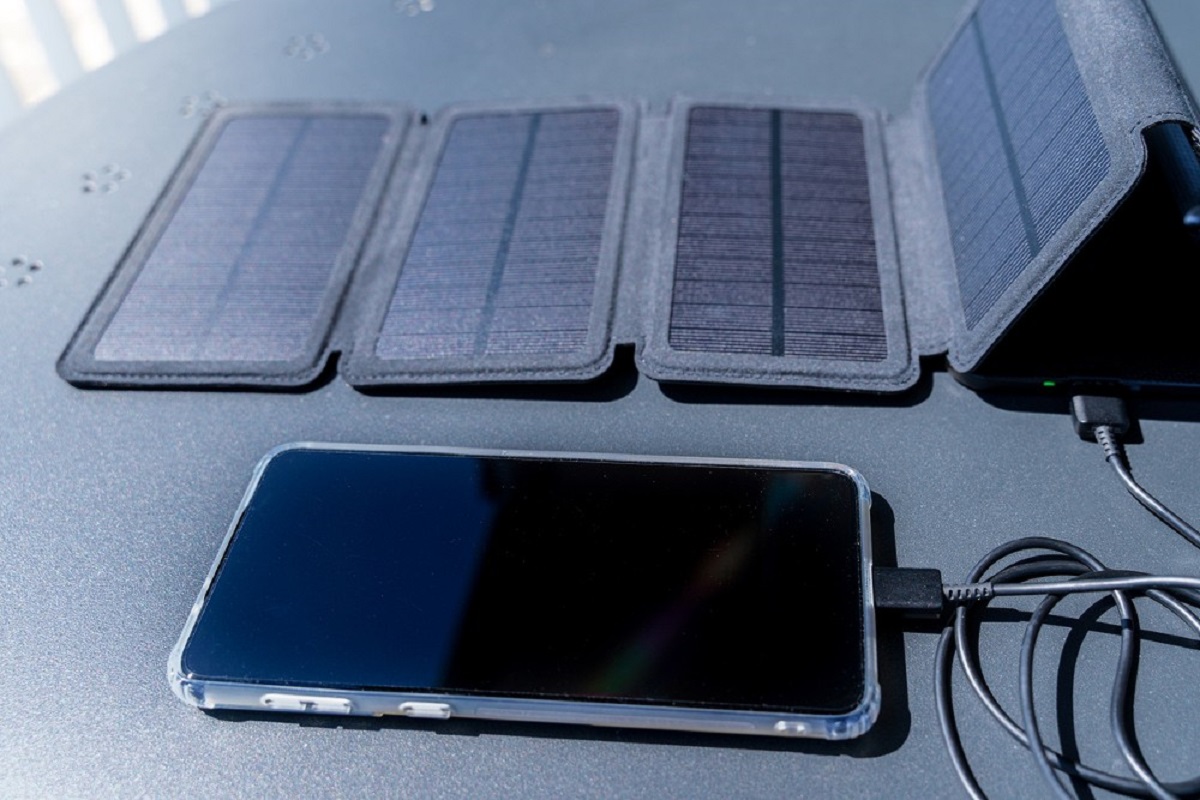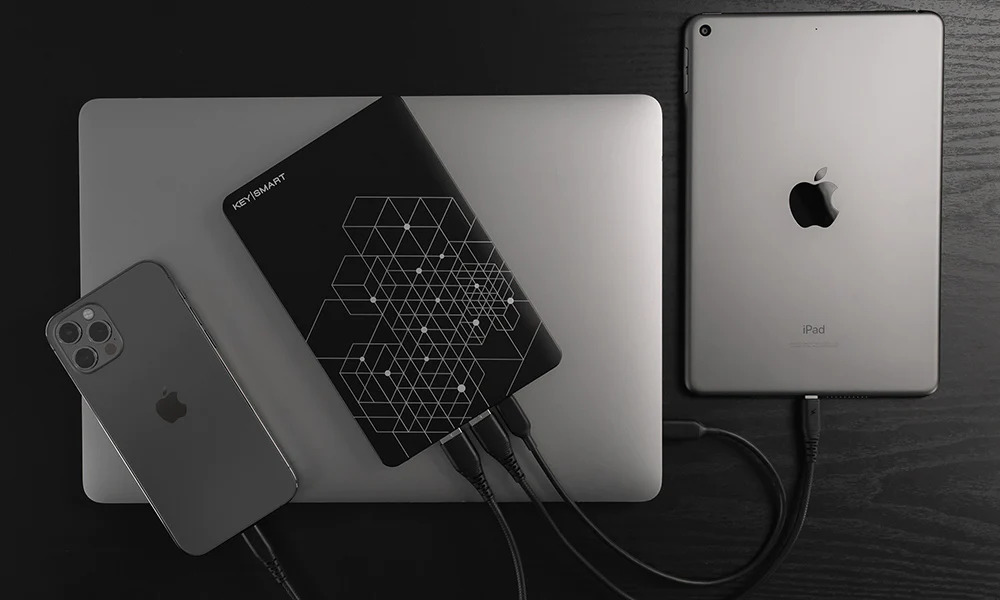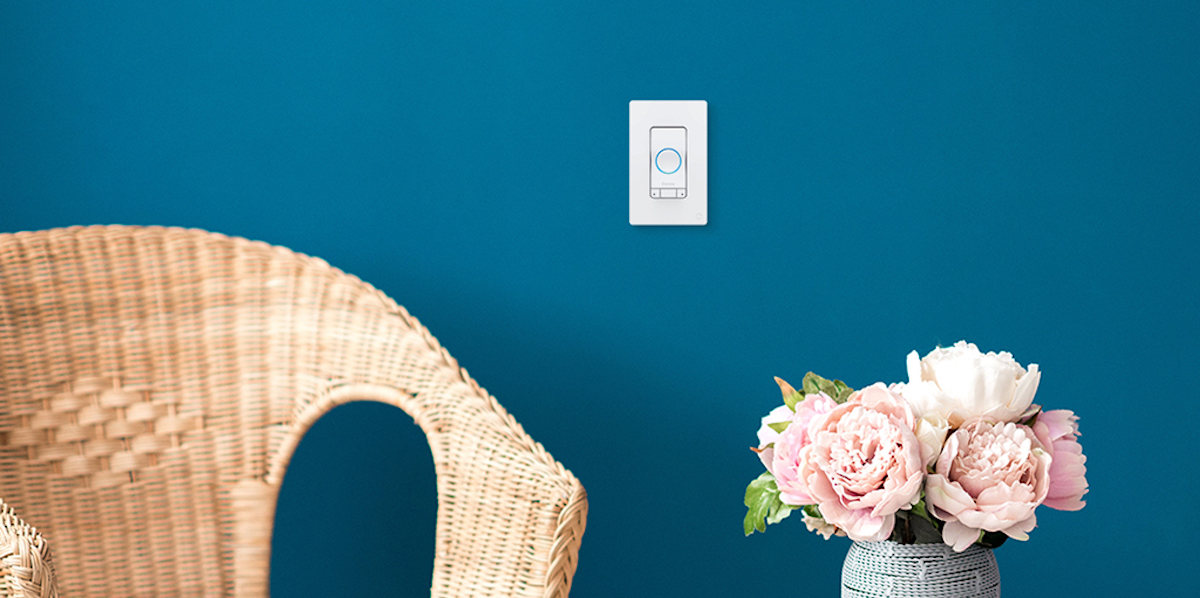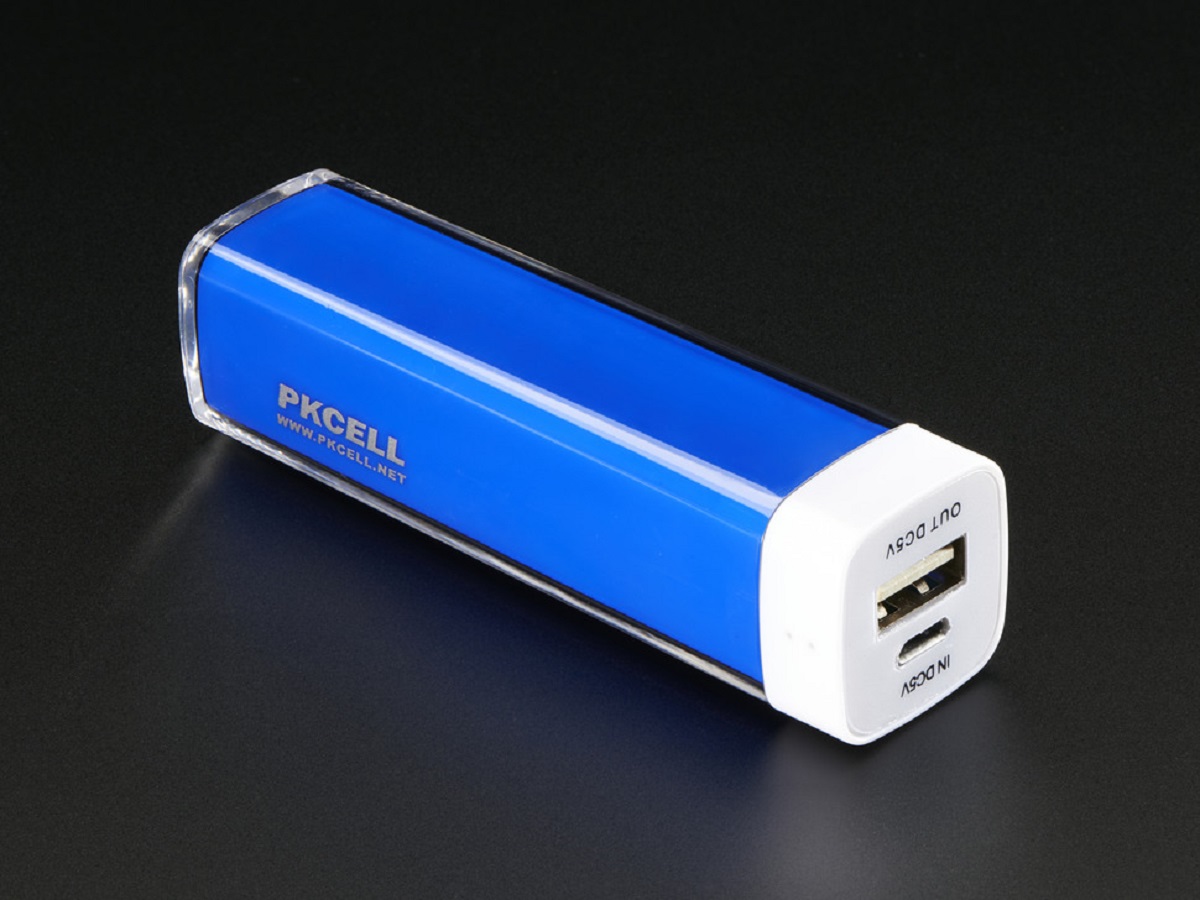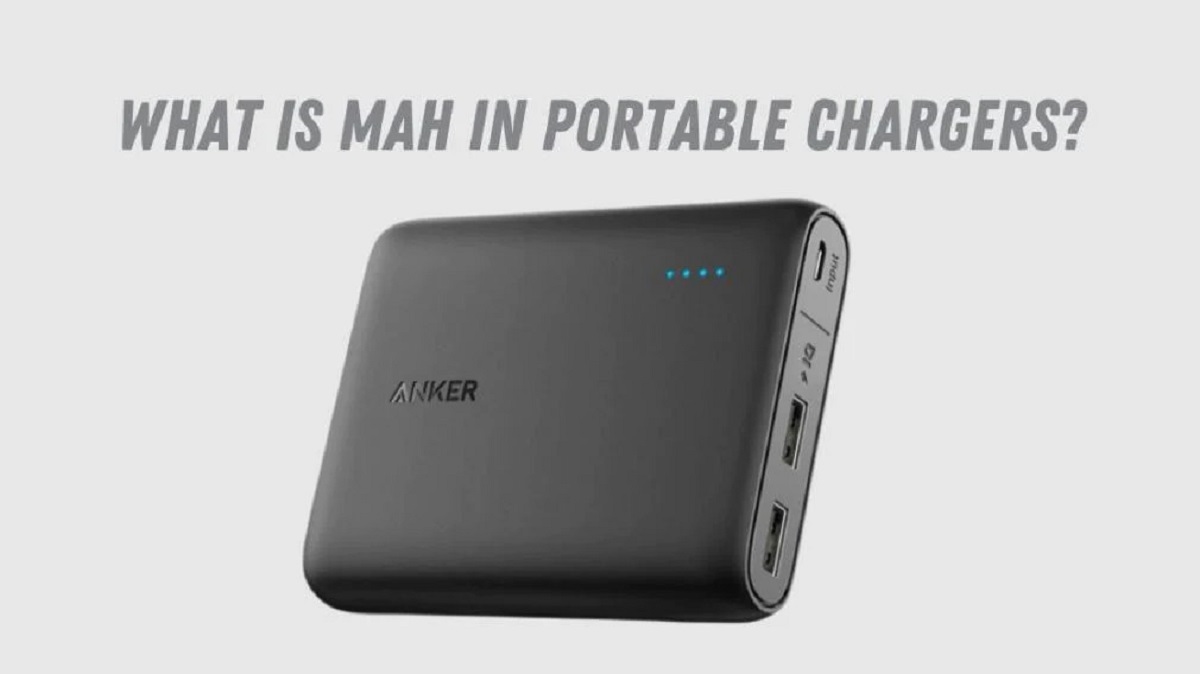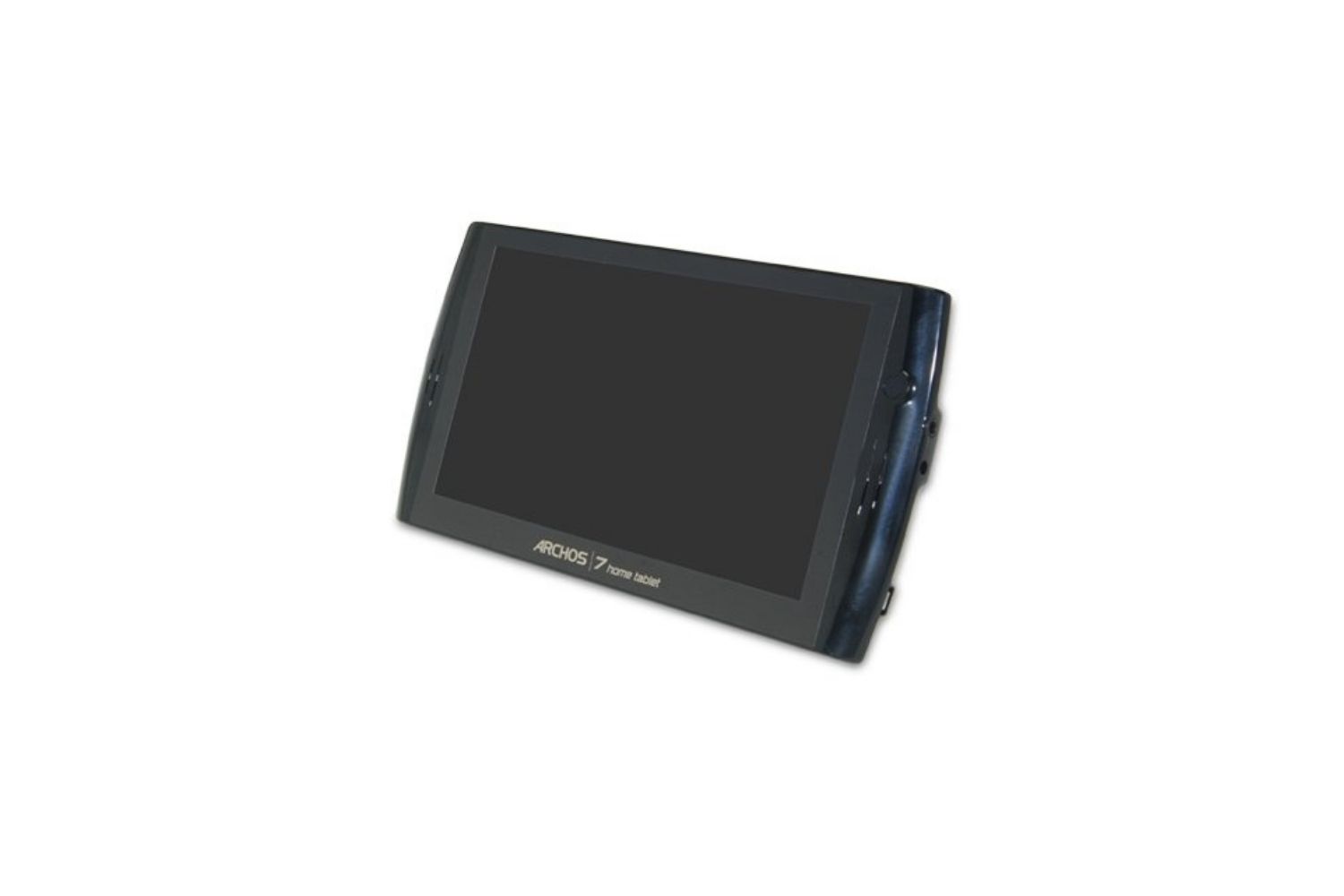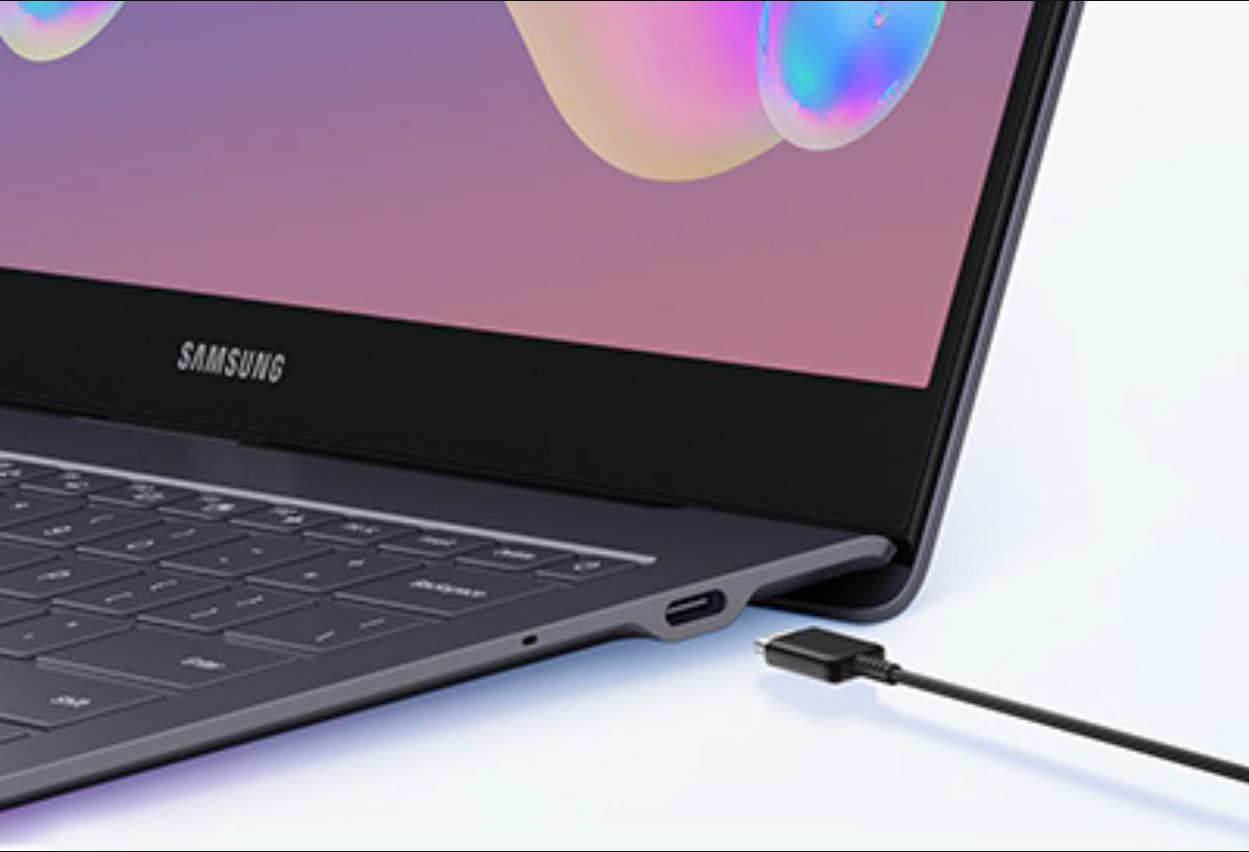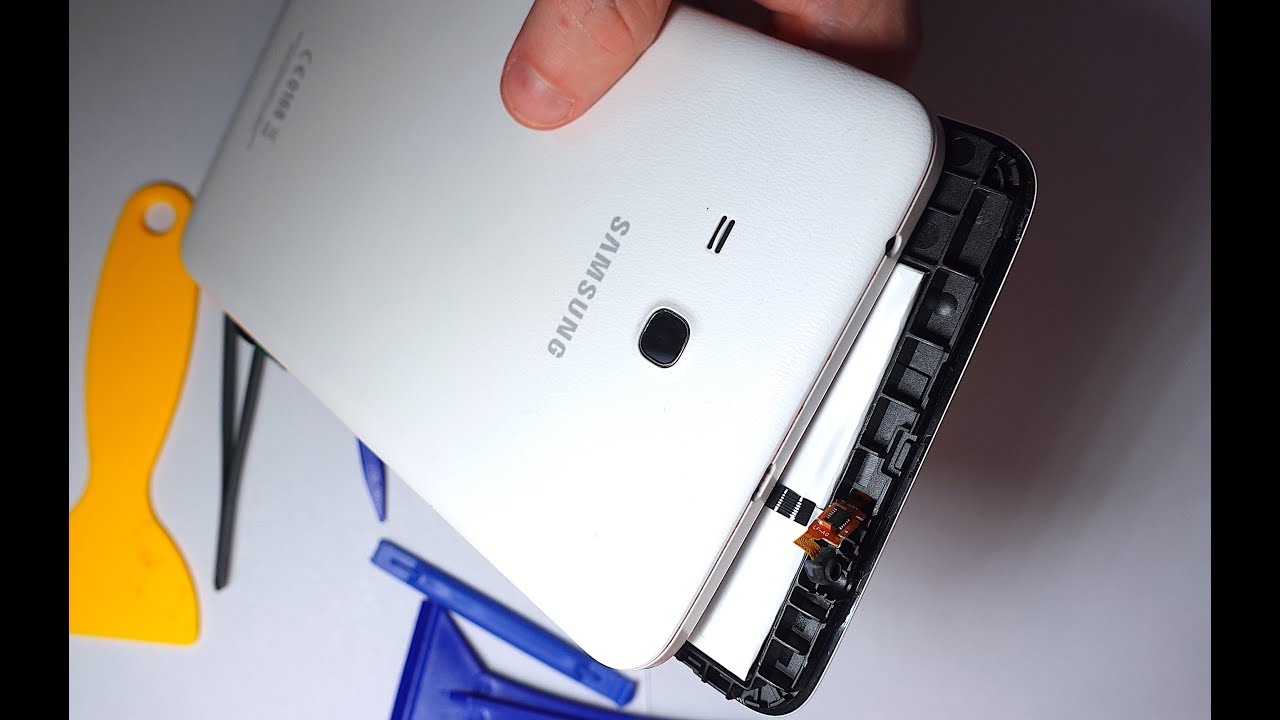Introduction
Tablets have become an integral part of our daily lives, serving as versatile devices for communication, entertainment, and productivity. With their compact size and convenience, tablets have gained popularity among individuals of all ages. However, with this increased usage comes the concern of power consumption. How much electricity does a tablet use? Understanding the power consumption of tablets is essential for both consumers and manufacturers in terms of energy efficiency and managing battery life.
Tablets operate on electrical power, utilizing various components and processes to deliver a seamless user experience. With their touchscreen interfaces, vibrant displays, and powerful processors, tablets require a certain amount of electricity to function optimally. It is important to understand how tablets work and the factors that influence their power consumption to make informed decisions regarding energy usage and device performance.
Power consumption is determined by several factors, including the tablet’s hardware specifications, display brightness, network connectivity, and software usage. Different activities and applications on a tablet can also affect its power usage, causing variations in energy consumption. By analyzing and evaluating these factors, we can gain insights into the typical power usage of tablets and the battery life they offer.
In this article, we will delve into the intricacies of tablet power consumption, exploring the factors that affect it and providing tips on how to reduce power usage. Additionally, we will offer advice on maximizing the battery life of your tablet to ensure uninterrupted usage throughout the day. So, let’s unravel the mysteries of tablet power consumption and learn how to optimize our devices for both efficiency and longevity.
How Tablets Work
Tablets are portable computing devices that incorporate a touch-sensitive screen as their primary input method. They are powered by integrated processors, memory modules, and storage systems, running on operating systems specifically designed for tablets.
At the heart of a tablet is the central processing unit (CPU), which serves as the brain of the device. The CPU executes instructions and performs calculations, enabling the tablet to run apps, browse the internet, and handle various multimedia tasks. The performance and power efficiency of the CPU play a crucial role in determining the power consumption of the tablet.
In addition to the CPU, tablets feature random-access memory (RAM) and storage for storing and accessing data. RAM provides temporary storage for running apps and processes, while storage space holds all your files, documents, and downloaded content. The capacity and speed of these components can impact the power consumption of the tablet.
The display is one of the primary power consumers in a tablet. Most tablets utilize LCD or OLED screens, which provide vivid colors and sharp visuals. The brightness level of the screen significantly influences power consumption. Higher brightness levels require more power, while lower levels offer energy savings. Some tablets also feature adaptive brightness technology, adjusting the screen brightness based on ambient lighting conditions to optimize power usage.
Connectivity options, such as Wi-Fi and Bluetooth, enable tablets to connect to the internet, share data, and interact with other devices. These wireless technologies consume power, especially when actively transmitting or receiving data. Enabling these features only when necessary can help conserve battery life.
Furthermore, tablets have built-in sensors, including accelerometers, gyroscopes, and ambient light sensors, which enhance the user experience. These sensors provide functionality for orientation detection, motion control, and auto-adjustment of screen brightness. Although they do consume power, their impact is relatively minimal compared to other components.
Overall, tablets are complex devices that require electricity to power multiple components and processes. Understanding how these components function and contribute to power consumption is essential for optimizing energy usage and prolonging battery life on your tablet.
Understanding Power Consumption
Power consumption refers to the amount of electrical energy utilized by a device over a specific period. In the context of tablets, power consumption directly affects battery life and the overall efficiency of the device. Understanding how power is consumed by tablets is crucial for managing energy usage and maximizing the longevity of your device.
The power consumed by a tablet can be divided into two categories: active power and standby power. Active power is the energy consumed when the tablet is in use, such as when running apps, streaming multimedia content, or browsing the internet. Standby power, on the other hand, is the power consumed when the tablet is in sleep mode or idle, but still powered on and ready for use.
The power consumed by a tablet in active mode varies depending on the tasks being performed and the intensity of usage. Activities that require heavy processing power, such as gaming or video editing, tend to consume more power than simpler tasks like reading e-books or browsing social media. Similarly, using connectivity features like Wi-Fi or accessing cellular networks increases power consumption.
Standby power consumption is generally lower than active power consumption but still contributes significantly to overall energy usage. Even when a tablet is not actively in use, it continues to draw a small amount of power to maintain system readiness and retain data in memory. Power-saving features and modes, such as sleep mode or screen timeout, can help reduce standby power consumption.
It is important to note that power consumption can vary between different tablet models and manufacturers. Factors such as the efficiency of the components, optimization of the operating system, and software optimizations can all influence power consumption. Therefore, it is advisable to consider the power consumption specifications and reviews when selecting a tablet.
By understanding the power consumption patterns of your tablet, you can make informed decisions to balance performance and energy efficiency. Adjusting settings like screen brightness, disabling unnecessary connectivity features, and closing unused apps can help reduce power consumption. Additionally, using power-saving modes and optimizing battery settings can extend the battery life of your tablet.
Overall, comprehending power consumption on tablets empowers users to make conscious choices that maximize battery life and improve energy efficiency. It is a vital aspect to consider for a seamless and long-lasting tablet experience.
Factors that Affect Tablet Power Consumption
The power consumption of a tablet is influenced by various factors, including both hardware and software components. Understanding these factors can help users optimize their tablet’s power usage and enhance its overall efficiency. Let’s explore some of the key factors that impact tablet power consumption.
1. Processor and Performance: The processor or CPU is a critical component of a tablet that affects power consumption. Tablets equipped with high-performance processors tend to consume more power, especially when running resource-intensive apps or multitasking. Opting for devices with efficient, power-saving processors can help reduce power consumption while maintaining satisfactory performance.
2. Display Brightness: The brightness level of the tablet’s display significantly impacts power consumption. Higher brightness settings require more power, especially for LCD screens. Decreasing the brightness or enabling automatic brightness adjustment can help conserve energy and extend battery life.
3. Network Connectivity: Tablets that are connected to Wi-Fi or cellular networks consume more power due to data transmission activities. When Wi-Fi or cellular data is not immediately needed, disabling these features or switching to airplane mode can minimize power consumption.
4. Screen On Time: The amount of time the tablet’s screen is on directly affects power usage. Prolonged usage of the screen for activities like gaming, video streaming, or web browsing will consume more power. Minimizing screen time by utilizing sleep mode or screen timeout settings can help conserve battery life.
5. App and Software Optimization: Certain apps and software processes running in the background may use excessive power. Poorly optimized apps can consume resources unnecessarily and drain the battery quickly. It’s essential to close unused apps and regularly update the tablet’s software to ensure optimal power efficiency.
6. Ambient Temperature: Operating tablets in extreme temperature conditions, such as very hot or cold environments, can affect battery performance and power consumption. High temperatures can degrade the battery life, while cold temperatures can temporarily reduce battery efficiency. Keeping tablets within the recommended temperature range can help optimize power consumption.
7. Battery Capacity and Age: The battery capacity and age of a tablet also play a role in power consumption. As batteries age, their capacity to hold a charge diminishes, resulting in shorter battery life and increased power drain. Replacing the battery or properly maintaining the tablet’s battery can help mitigate power consumption issues.
By considering these factors and implementing energy-saving practices, users can effectively reduce tablet power consumption, extend battery life, and improve overall device performance. Understanding the interplay between these factors enables users to strike a balance between power usage and functionality, ensuring a seamless and long-lasting tablet experience.
Typical Power Usage of Tablets
When it comes to the power consumption of tablets, there is a wide variation depending on several factors, including the tablet model, specifications, and usage patterns. However, understanding the typical power usage of tablets can give users a general idea of what to expect in terms of energy consumption and battery life.
On average, tablets consume between 2 to 10 watts of power during typical usage scenarios. This power usage can vary depending on the intensity of the tasks being performed. For example, reading e-books or browsing websites with primarily static content will consume less power compared to activities such as gaming or streaming high-definition videos, which require more processing power and higher screen brightness levels.
The display is one of the primary power consumers in tablets. LCD screens, commonly found in most tablets, consume more power compared to OLED screens, especially when displaying bright colors or images. As a result, tablets with OLED screens may have slightly lower power consumption, offering potentially longer battery life.
The power consumption also varies based on connectivity options. Tablets connected to Wi-Fi or cellular networks for internet access will consume more power than when in offline mode. However, the power used for network connectivity is relatively low compared to the power consumed by the display and processor.
Additionally, background tasks and notifications can contribute to power consumption. Apps running in the background, syncing data, or sending notifications can use power even when the tablet is idle. Properly closing unused apps, adjusting sync settings, and managing notifications can help reduce power drain.
In terms of battery life, tablets typically provide anywhere from 8 to 12 hours of usage on a single charge, although this can vary based on the tablet’s specifications and usage patterns. Factors such as screen brightness, Wi-Fi usage, and app usage play a significant role in determining the actual battery life experienced by users.
It is important to note that these power usage estimates are generalizations and can vary depending on factors such as the tablet model, software optimizations, and battery capacity. Manufacturers often provide specifications and battery life estimates for their tablets, which can give users a more accurate understanding of power consumption and battery performance.
By being aware of the typical power usage of tablets and understanding the factors that influence it, users can make informed decisions to optimize energy consumption and maximize battery life. Adjusting settings, managing resource-intensive tasks, and utilizing power-saving features can help ensure a balance between performance and power efficiency on tablets.
Battery Life of Tablets
The battery life of a tablet refers to the amount of time it can operate on a single charge before requiring recharging. Battery life is an essential consideration for tablet users, as it determines how long they can use their device without being tethered to a power source. The actual battery life of a tablet can vary depending on several factors, including the tablet model, usage patterns, and battery capacity.
Tablets are typically designed to offer anywhere from 8 to 12 hours of continuous usage on a single charge. However, it is important to note that this estimate is based on specific conditions established during testing by manufacturers, such as moderate screen brightness, basic app usage, and Wi-Fi connectivity.
The battery life of a tablet can be influenced by various factors:
- Screen Brightness: The brightness level of the tablet’s display has a significant impact on battery life. Higher brightness settings require more power, while lower brightness levels can help conserve energy. Adjusting the screen brightness to an optimal level can enhance battery performance.
- Network Connectivity: The use of Wi-Fi, cellular data, or Bluetooth connectivity can drain the tablet’s battery. Constant network activity requires power, and when these features are not necessary, disabling them can help extend battery life.
- App Usage: Certain apps and activities consume more power than others. Resource-intensive tasks like gaming or video streaming tend to use more battery compared to simpler tasks like reading or composing emails. Limiting the use of power-hungry apps or utilizing power-saving modes can help prolong battery life.
- Battery Age and Capacity: Over time, the battery capacity of a tablet can decrease, resulting in shorter battery life. Regularly using and charging the tablet can help maintain battery health. However, if the battery no longer holds a charge for a satisfactory amount of time, it may need to be replaced.
- Background Processes and Notifications: Background processes and notifications running on the tablet can contribute to battery drain, even when the device is not actively in use. Properly managing background apps, disabling unnecessary notifications, and optimizing settings can help conserve battery power.
It is important to remember that battery life estimates provided by manufacturers are based on ideal, controlled conditions. Real-world usage patterns and settings adjustments can significantly impact actual battery life. Additionally, different tablets with varying specifications will have different battery life capabilities.
To maximize battery life, users can employ several strategies:
- Adjusting screen brightness to an optimal level
- Disabling unnecessary connectivity features
- Closing unused apps and processes
- Enabling power-saving modes when appropriate
- Updating the tablet’s software for improved efficiency
- Monitoring battery usage and identifying power-hungry apps
By considering these factors and implementing power-saving practices, tablet users can extend the battery life and enjoy prolonged usage between charges. Ultimately, understanding the battery life of a tablet and taking steps to optimize it allows users to make the most of their device’s portable functionality.
How to Reduce Tablet Power Consumption
Reducing tablet power consumption can help extend battery life, allowing users to use their device for longer periods between charges. By implementing certain practices and making thoughtful adjustments to settings and usage, users can optimize power consumption and improve overall device efficiency. Here are some effective ways to reduce tablet power consumption:
- Adjust Screen Brightness: Lowering the screen brightness can significantly reduce power usage. Manually adjusting the brightness to a comfortable level or enabling automatic brightness adjustment can help conserve energy.
- Utilize Power-Saving Modes: Most tablets offer power-saving modes that optimize settings to reduce power consumption. Enable these modes when appropriate, as they can limit background activities, lower display refresh rates, and adjust performance settings to save energy.
- Manage Connectivity Features: Wi-Fi, cellular data, and Bluetooth consume power even when not actively used. Disable these features when not required, or utilize airplane mode to conserve battery life.
- Minimize Background Processes: Close unused apps and limit the number of background processes running on the tablet. Keeping only essential apps open can reduce power usage and improve overall performance.
- Optimize App Usage: Some apps consume more power than others. Limit the usage of power-hungry apps, particularly those that heavily utilize the processor or require constant network connectivity. Consider using lighter alternatives or optimizing app settings to minimize power drain.
- Enable Battery-Saving Features: Take advantage of built-in battery-saving features within the tablet’s operating system. These features can help extend battery life by adjusting system performance and limiting power consumption.
- Manage Notifications: Excessive notifications can lead to unnecessary screen wake-ups and power drain. Disable or limit notifications from apps that are not essential, to minimize interruptions and conserve battery power.
- Opt for Wi-Fi Instead of Cellular Data: Whenever possible, connect to Wi-Fi networks instead of using cellular data. Wi-Fi consumes less power compared to cellular data, resulting in improved battery life.
By implementing these power-saving strategies, users can minimize tablet power consumption and maximize battery life. It is important to find a balance between power efficiency and functionality, as some adjustments may impact performance or user experience. Experiment with different settings and modes to find the optimal configuration for your needs.
It is also worth noting that different tablets and software versions may have varying power-saving features and settings. Explore the settings menu of your tablet and consult the user manual or manufacturer’s documentation for specific power-saving recommendations.
Remember, adopting these power-saving practices can lead to more sustainable device usage, improve productivity, and reduce the frequency of needing to recharge your tablet.
Tips for Maximizing Battery Life
Maximizing battery life is essential for getting the most out of your tablet’s usage without the need for frequent recharging. By following these tips, users can optimize their tablet’s battery life and ensure a longer-lasting experience:
- Optimize Screen Brightness: Lower the screen brightness to an optimal level that is comfortable for viewing while minimizing power consumption. Enabling automatic brightness adjustment can also help adjust brightness based on ambient lighting conditions.
- Use Wi-Fi Instead of Cellular Data: Whenever possible, connect to Wi-Fi networks instead of relying on cellular data. Wi-Fi consumes less power and can preserve battery life for longer periods.
- Close Unused Apps: Keep only essential apps running and close unused ones. Background apps can consume power even when they’re not in active use. Use the app switcher or task manager to terminate unnecessary processes.
- Disable Background App Refresh: Many apps use background app refresh to stay updated. Disable this feature for apps that do not require real-time updates, reducing power drain caused by frequent background activity.
- Manage Push Email and Notifications: Limit the frequency of push email and app notifications, as they can be a major drain on battery life. Adjust notification settings to only receive notifications from essential apps and increase email fetch intervals.
- Enable Battery-Saving Mode: Take advantage of the built-in battery-saving mode offered by your tablet. This mode adjusts various settings, such as screen brightness, performance, and network connectivity, to conserve battery life.
- Update Operating System and Apps: Keep your tablet’s operating system and apps up to date. Often, updates include performance optimizations and bug fixes that can improve battery efficiency.
- Use Power-Saving Accessories: Invest in power-saving accessories such as external battery packs or portable charging cases. These can provide additional power when needed, extending your tablet’s usage time.
- Adjust Auto-Lock and Sleep Settings: Reduce the auto-lock and sleep timers to ensure faster screen timeout when the tablet is idle. This prevents unnecessary power consumption when the device is not in active use.
- Avoid Extreme Temperatures: Exposing your tablet to extreme temperatures, whether hot or cold, can have a negative impact on battery life. Keep your device within the recommended temperature range specified by the manufacturer.
Implementing these tips can significantly improve your tablet’s battery life. It’s important to note that individual results may vary, as battery life is influenced by various factors such as usage patterns, device specifications, and battery health. By adopting a combination of these practices and adjusting settings according to your preferences, you can make the most of your tablet’s battery and enjoy a longer-lasting, uninterrupted experience.
Conclusion
Understanding the power consumption and battery life of tablets is crucial for optimizing energy usage and maximizing the performance and longevity of these devices. Tablets have become integral to our daily lives, serving as versatile tools for communication, entertainment, and productivity. By being mindful of certain factors and adopting power-saving strategies, users can reduce power consumption, extend battery life, and enhance overall device efficiency.
We explored how tablets work and the components that contribute to power consumption, such as the processor, display, and connectivity options. We also discussed the factors that can affect tablet power consumption, including brightness levels, app usage, and network connectivity. By comprehending these factors, users can make informed decisions to balance performance and energy efficiency.
Additionally, we delved into the typical power usage of tablets, which can vary depending on the model and usage patterns. Understanding these power consumption estimates helps users make better-informed decisions regarding energy usage and battery life expectations.
We provided tips for reducing tablet power consumption, including adjustments to screen brightness, managing connectivity features, closing unused apps, and utilizing power-saving modes. These practical strategies can significantly improve battery life and enhance the overall efficiency of tablets.
Finally, we discussed tips for maximizing battery life, including optimizing screen brightness, managing background processes, and using Wi-Fi instead of cellular data. These strategies, when applied collectively, can help users achieve a longer-lasting tablet experience without the inconvenience of frequent recharging.
In conclusion, by understanding power consumption, implementing power-saving practices, and being mindful of usage patterns, tablet users can optimize their device’s energy efficiency and maximize battery life. By striking the right balance between performance and power consumption, we can ensure that our tablets remain reliable and functional companions in our daily lives.







